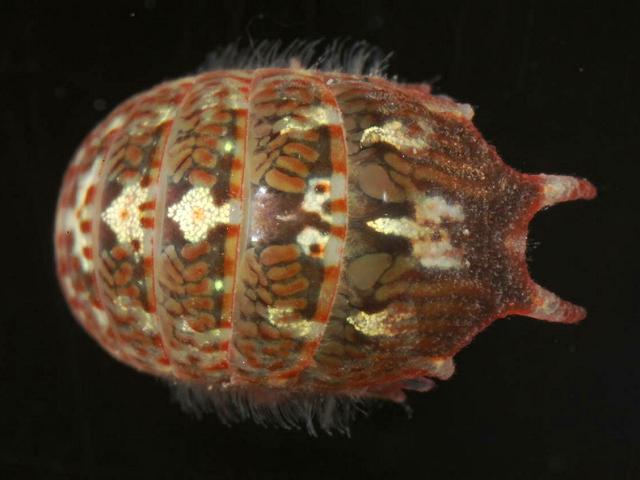
APHOTOMARINE
An educational resource dedicated mainly to the photography
and diversity of marine life that can be found in coastal waters
and intertidal areas of Great Britain and Ireland by David Fenwick.

Dynamene bidentata (Adams, 1800) - An isopod (Isopoda images)
Scroll down and rollover titles to change screen image or click on title to view image.
Isopoda
Dynamene bidentata
- highly coloured male 1
Dynamene bidentata
- highly coloured male 1
Isopoda
Dynamene bidentata
- highly coloured male 2
Isopoda
Dynamene bidentata
- highly coloured male 3
Isopoda
Dynamene bidentata
- highly coloured male 4
Isopoda
Dynamene bidentata
- male and female 1
A highly coloured male specimen found under a stone at Chimney Rocks, Penzance, Cornwall, 05.08.16. The parasitic isopod Ancyroniscus bonnieri was found on a specimen of Dynamene bidentata the same day.
Isopoda
Dynamene bidentata
- male from Chimney Rocks 1
Isopoda
Dynamene bidentata
- female from Chimney Rocks 1
Isopoda
Dynamene bidentata
- female from Chimney Rocks 2
Isopoda
Dynamene bidentata
- female from Chimney Rocks 3
Isopoda
Dynamene bidentata
- female from Chimney Rocks 4
Above animals found in a rock crevice on the lowershore at Chimney Rocks, Penzance, Cornwall. 10.08.13.
Isopoda
Dynamene bidentata
- saw wrack / male side view 1
Isopoda
Dynamene bidentata
- saw wrack / male top view 1
Isopoda
Dynamene bidentata
- saw wrack / male top view 2
Isopoda
Dynamene bidentata
- saw wrack / male underside 1
Isopoda
Dynamene bidentata
- saw wrack / female 1
Isopoda
Dynamene bidentata
- rock crevice / male top view 1
Isopoda
Dynamene bidentata
- rock crevice / male top view 2
Isopoda
Dynamene bidentata
- white berried female 1
Isopoda
Dynamene bidentata
- white berried female 2
Isopoda
Dynamene bidentata
- white berried female 3
Isopoda
Dynamene bidentata
- white berried female 4
Isopoda
Dynamene bidentata
- white berried female 5
When the the females of the species are mated they moult and turn white, they are then called 'berried'. Males can have a harem, a collection of up to 10 females around them. When white the females can easily be confused with other isopods, Sphaeroma and Lekanesphaera, although these may curl up into a ball when disturbed. White Dynamene females can be distinguished from these by the notch in middle of the rear segment. The eggs of Dynamene are kept in the females ventral pouch until released, the females die soon after. The females live for a year, the males two years. Produced with the assistance of David Holdich.
Images of species taken at Spit Point, Par, near St. Austell, 12.06.10; and at Lariggan Rocks, Wherry Town, Penzance, Cornwall. Species found amongst and at the base of Saw Wrack on the middle and lowershore; also within rock crevices.

The main objective of this website is in furthering environmental awareness and education through the medium of photography. To increase awareness and access to the wildlife of the region and help
people find and identify it. Sometimes the difference between species is obvious but many species can only be determined by observing microscopic characteristics that are specific to any one species.